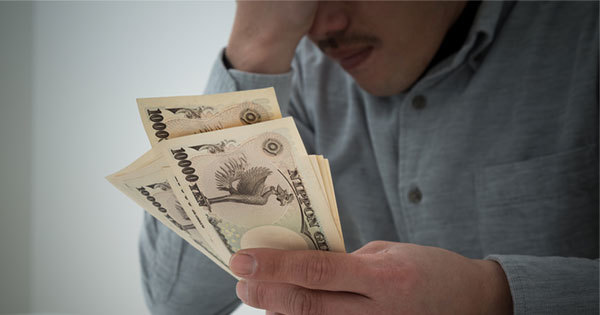Move Over Chernobyl, Fukushima is Now Officially the Worst Nuclear Power Disaster in History
by John Laforge�@�iCounterPunch 2018/4/27�j
https://www.counterpunch.org/2018/04/27/move-over-chernobyl-fukushima-is-now-officially-the-worst-nuclear-power-disaster-in-history/
The radiation dispersed into the environment by the three reactor meltdowns at Fukushima-Daiichi in Japan has exceeded that of the April 26, 1986 Chernobyl catastrophe, so we may stop calling it the �gsecond worst�h nuclear power disaster in history. Total atmospheric releases from Fukushima are estimated to be between 5.6 and 8.1 times that of Chernobyl, according to the 2013 World Nuclear Industry Status Report. Professor Komei Hosokawa, who wrote the report�fs Fukushima section, told London�fs Channel 4 News then, �gAlmost every day new things happen, and there is no sign that they will control the situation in the next few months or years.�h
Tokyo Electric Power Co. has estimated that about 900 peta-becquerels have spewed from Fukushima, and the updated 2016 TORCH Report estimates that Chernobyl dispersed 110 peta-becquerels.[1](A Becquerel is one atomic disintegration per second. The �gpeta-becquerel�h is a quadrillion, or a thousand trillion Becquerels.)
Chernobyl�fs reactor No. 4 in Ukraine suffered several explosions, blew apart and burned for 40 days, sending clouds of radioactive materials high into the atmosphere, and spreading fallout across the whole of the Northern Hemisphere �\ depositing cesium-137 in Minnesota�fs milk.[2]
The likelihood of similar or worse reactor disasters was estimated by James Asselstine of the Nuclear Regulatory Commission (NRC), who testified to Congress in 1986: �gWe can expect to see a core meltdown accident within the next 20 years, and it �c could result in off-site releases of radiation �c as large as or larger than the releases �c at Chernobyl.[3] Fukushima-Daiichi came 25 years later.
Contamination of soil, vegetation and water is so widespread in Japan that evacuating all the at-risk populations could collapse the economy, much as Chernobyl did to the former Soviet Union. For this reason, the Japanese government standard for decontaminating soil there is far less stringent than the standard used in Ukraine after Chernobyl.
Fukushima�fs Cesium-137 Release Tops Chernobyl�fs
The Korea Atomic Energy Research (KAER) Institute outside of Seoul reported in July 2014 that Fukushima-Daiichi�fs three reactor meltdowns may have emitted two to four times as much cesium-137 as the reactor catastrophe at Chernobyl.[4]
To determine its estimate of the cesium-137 that was released into the environment from Fukushima, the Cesium-137 release fraction (4% to the atmosphere, 16% to the ocean) was multiplied by the cesium-137 inventory in the uranium fuel inside the three melted reactors (760 to 820 quadrillion Becquerel, or Bq), with these results:
Ocean release of cesium-137 from Fukushima (the worst ever recorded): 121.6 to 131.2 quadrillion Becquerel (16% x 760 to 820 quadrillion Bq). Atmospheric release of Cesium-137 from Fukushima: 30.4 to 32.8 quadrillion Becquerel (4% x 760 to 820 quadrillion Bq).
Total release of Cesium-137 to the environment from Fukushima: 152 to 164 quadrillion Becquerel. Total release of Cesium-137 into the environment from Chernobyl: between 70 and 110 quadrillion Bq.
The Fukushima-Daiichi reactors�f estimated inventory of 760 to 820 quadrillion Bq (petabecquerels) of Cesium-137 used by the KAER Institute is significantly lower than the US Department of Energy�fs estimate of 1,300 quadrillion Bq. It is possible the Korean institute�fs estimates of radioactive releases are low.
In Chernobyl, 30 years after its explosions and fire, what the Wall St. Journal last year called �gthe $2.45 billion shelter implementation plan�h was finally completed in November 2016. A huge metal cover was moved into place over the wreckage of the reactor and its crumbling, hastily erected cement tomb. The giant new cover is 350 feet high, and engineers say it should last 100 years �\ far short of the 250,000-year radiation hazard underneath.
The first cover was going to work for a century too, but by 1996 was riddled with cracks and in danger of collapsing. Designers went to work then engineering a cover-for-the-cover, and after 20 years of work, the smoking radioactive waste monstrosity of Chernobyl has a new �gtin chapeau.�h But with extreme weather, tornadoes, earth tremors, corrosion and radiation-induced embrittlement it could need replacing about 2,500 times.
John Laforge�fs field guide to the new generation of nuclear weapons is featured in the March/April 2018 issue of CounterPunch magazine.
Notes.
[1]Duluth News-Tribune & Herald, �gSlight rise in radioactivity found again in state milk,�h May 22, 1986; St. Paul Pioneer Press & Dispatch, �gRadiation kills Chernobyl firemen,�h May 17, 1986; Minneapolis StarTribune, �gLow radiation dose found in area milk,�h May 17, 1986.
[2]Ian Fairlie, �gTORCH-2016: An independent scientific evaluation of the health-related effects of the Chernobyl nuclear disaster,�h March 2016 (https://www.global2000.at/sites/global/files/GLOBAL_TORCH%202016_rz_WEB_KORR.pdf).
[3]James K. Asselstine, Commissioner, US Nuclear Regulatory Commission, Testimony in Nuclear Reactor Safety: Hearings before the Subcommittee on Energy Conservation and Power of the Committee on Energy and Commerce, House of Representatives, May 22 and July 16, 1986, Serial No. 99-177, Washington, DC: Government Printing Office, 1987.
[4] Progress in Nuclear Energy, Vol. 74, July 2014, pp. 61-70; ENENews.org, Oct. 20, 2014.
----------(���p�����܂�)--------------------------------
----------(�ٖ�����)--------------------------------
�`�F���m�u�C���������̂��A�����͌����ɗ��j��ň��̌��q�͍ЊQ�ł���
���{�̕�����ꌴ����3��̌��q�F�̃����g�_�E���ɂ����ɕ��o���ꂽ���˔\��
1986�N4��26���Ƀ`�F���m�u�C���������̂��z���Ă���B
���j��2�Ԗڂɐ[���Ȍ��q�͍ЊQ���ƌĂԂ̂͂�����߂��ق����悢���낤�B
2013�N���E���q�͎Y�ƕ��ɂ��A�������̂ł̑�C�ւ̕��o�ʂ́A
�`�F���m�u�C�����̂�5.6����8.1�{�ƌ��ς����Ă���B
���̕��ŕ����̏͂�S�������R�E���C�E�z�\�J�������́A
�u�قƂ�ǖ����V�������Ƃ��N���Ă���B���������邢�͐��N�ŁA
���R���g���[���ł��钛���͂Ȃ��v�ƃ����h���E�`�����l��4�Ɍ�����B
�����d�͂�900�^�x�N������������ꂩ����o���ꂽ�ƌ��ς����Ă���B
�A�b�v�f�[�g���ꂽ2016�N��TORCH���|�[�g�́A�`�F���m�u�C����110�^�x�N����
����o�����Ɛ��肳��Ă���[1]
�i1�x�N������1�b�Ԃ�1��̕����\���B�^�x�N������1000���x�N�����j
�E�N���C�i�̃`�F���m�u�C������4���F�́A�������Đ�����сA40���ԔR�����B
���ː��������܂_���C���֕����グ�A�t�H�[���A�E�g�͖k�����S�̂�
�y�B�ă~�l�\�^�B�̋������Z�V�E��137�ʼn������ꂽ[2]�B
���q�͋K���ψ���(NRC)�̃W�F�[���X�E�A�Z���X�^�C���́A1986�N�ɋc��ŁA
���l������ɐ[���Ȍ��q�͍ЊQ���N����\��������Ə،������B
�u����20�N�ԂɃR�A�E�����g�_�E�����̂��N���邾�낤�B�`�F���m�u�C�����̂Ɠ�����
����K�͂̕��ː������̕��o���N������v[3]�B
�������̎��̂�25�N��ɋN�����B
���{�ł͓y��A�_�앨�A���̉������L�͈͂Ɋg����A���\�A���`�F���m�u�C�����̂�
�s�Ȃ����悤�Ɋ�@�ɂ��ꂳ�ꂽ�S�Z���������ƌo�ς��j�����˂Ȃ��B
���̂��߁A���{���{�̏����y��́A�`�F���m�u�C�����̌�̃E�N���C�i�̊���
�͂邩�Ɋɂ��B
�������̂̃Z�V�E��137���o�ʂ̓`�F���m�u�C�������̂�
2014�N7���A�\�E���x�O�̊؍����q�͌������iKAER)�́A��������3���
�����g�_�E���ɂ��A�`�F���m�u�C�����̂�2�{����4�{�ɓ������Z�V�E��137��
���o�����\��������ƕ��Ă���[4]�B
������ꂪ���ɕ��o�����Z�V�E��137�̗ʂ𐄒肷�邽�߂ɁA
�Z�V�E��137�̕��o����i4%����C��16%���C�m�ցj�ɁA3��̃����g�_�E������
���q�F���̃E�����R�����̃Z�V�E��137�̗ʁi760�`820�^�x�N�����j��
�|�����킹�āA�������Z�o�����B
������ꂩ��̊C�m�ւ̃Z�V�E��137�̕��o�ʂ͎j��ň��ł���A
121.6�`131.2�y�^�x�N�����i16% x 760�`820�y�^�x�N�����j�ƂȂ�B
����A�Z�V�E��137�̑�C���o�ʂ́A30.4�`32.8�y�^�x�N�����ł���B
�i4% x 760�`820�y�^�x�N�����j
������ꂩ����ւ̃Z�V�E��137���o�ʍ��v��152�`164�y�^�x�N�����ł���B
�`�F���m�u�C���̏ꍇ�́A70�`110�y�^�x�N�����ł������B
�������̔R�����̃Z�V�E��137��760�`820�y�^�x�N�����Ƃ���KAER�ɂ�鐄��ʂ́A
�ăG�l���M�[�Ȃ�1300�y�^�x�N�����Ƃ������ς���������Ȃ菭�Ȃ��B
���̊؍��̌������́A���˔\���o�ʂ�Ⴍ���ς����Ă���\��������B
��N�E�H�[���X�g���[�g�E�W���[�i�������u24.5���h���̃V�F���^�[���v��v�ƌĂv�悪�A
�`�F���m�u�C���Ŕ��������30�N��A2016�N11���ɂ悤�₭�I�������B
���q�F�c�[�ƁA�ˊэH���ō���{���{���ɂȂ����Ί����A����ȋ������̃J�o�[���ړ���
�������ƂɂȂ����B
���̐V��������ȃJ�o�[�͍���350�t�B�[�g�ŁA100�N�͎��ƋZ�p�҂����͌����B
������25���N���������˔\��Q�ɂ���ׂ�Ƃ͂邩�ɒZ���B
�ŏ��Ɍ������ꂽ�Ί���100�N�Ԏg����͂����������A1996�N�܂łɂЂъ���͋N���A
����̊댯�����w�E���ꂽ�B
�v�҂����͐Ί����J�o�[�ŕ������ƂɌ��߁A�悤�₭20�N��ɁA���܂��ɂ����Ԃ�
���ː��K���L�̉����E�`�F���m�u�C�������͐V�����u���L�̖X�q�����Ԃ邱�ƂɂȂ����B
�������A�������V��◳���A�n�k�A���H�A�����ĕ��ː��ɂ��Ɖ��̂��߂ɁA
2500����̎��ւ����K�v�ɂȂ邾�낤�B
----------(�ٖ��܂�)--------------------------------
�ˊтŐΊ�������đ�C�ւ̕��o��h���A�n�Z�R���̒��~���h�����Ƃ��ł���
�`�F���m�u�C���������́B
�������͂��܂��ɐV��A�n�Z�R���͒n���[�������Ēn�����Ɣ�������
���C���グ�Ă���ߎS�ȏ�Ԃł��B
���˔\�̕��o�ʂ��͂邩�ɑ����͓̂��R�ł��傤�B
�`�F���m�u�C���ł����J�o�[�����������A�n�Z�R���͑S��������ŁA
�����Ƃ͂قlj�����Ԃł��B
���d�͐��N��ɗn�Z�R�������o���ƌ����Ă��܂����A���������ɉ߂��܂���B
�i�֘A���j
�u�`�F���m�u�C�������ɐV�h�[���@�Ί����ƂP�O�O�N�����@�i�����V���j�v�@�i�ٍe�@2016/11/17�j
http://www.asyura2.com/16/genpatu46/msg/791.html
�u�Ⴑ�ꂪ������`�F���m�u�C���u�V�V�F���^�[�v�ł��ƂP�O�O�N������A���܂��p�F��Ƃ̂߂ǂ��������B�v
�i���C����Ԃ��� 2016/3/26�j
http://www.asyura2.com/16/genpatu45/msg/378.html
�u�w�����̓`�F���m�u�C���̂P�O�{�ł��x������ꌴ���������g�c���Y(���N�T�W��)�̌��t
�i�^����T���u���O�j�v�@�i���C����Ԃ��� 2013/7/19�j
http://www.asyura2.com/13/genpatu32/msg/571.html
http://www.asyura2.com/18/genpatu50/msg/150.html







 �@�薼�ɂ͕K���u���C������ցv�ƋL�q���Ă��������B
�@�薼�ɂ͕K���u���C������ցv�ƋL�q���Ă��������B